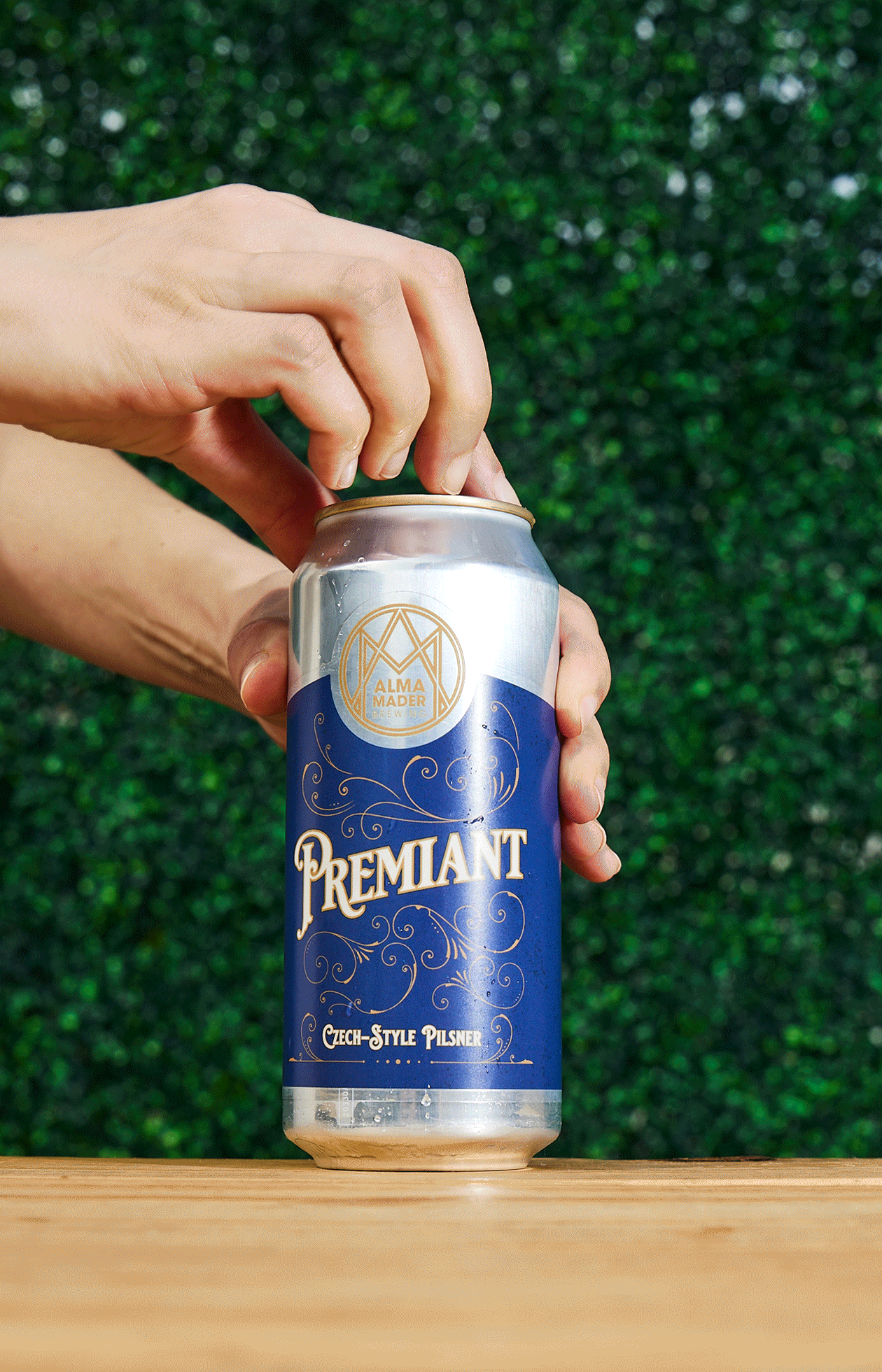Premiant Pilsner
By Alma Mader
BY LIZ COOK

PHOTOGRAPHY BY CALEB CONDIT AND REBECCA NORDEN
Nick Mader never wanted to be known for a single beer. When he and his wife, Tania Hewett-Mader, opened Alma Mader in 2019, they were determined to avoid stagnation and focus on the of-the-moment beers their customers most wanted to drink. “We really started off like, ‘we don’t do flagships,’” Mader says.
The popularity of Premiant, his Czech-style Pilsner, was a pleasant surprise. Customers quickly poured into the bright, airy taproom on Southwest Boulevard to order Premiant with a slow pour—a technique that gives the Pilsner a glossy white foam cap as thick as whipped cream.
Premiant has more than just curb appeal. The light, crisp body and low ABV make it easy to session on a sunny afternoon without fatiguing your palate (or liver). The Pilsner has delicate lemon-blossom notes similar to a Buddha’s hand and a dry, almost spicy finish that demands another sip. It’s exactly what we want to drink right now—which is why we’ve named it our 2022 Beer of the Year.
The craft beer world has always been subject to trend-cycling. Heavy pastry stouts give way to hazy hop bombs and sherbet-inspired sours. But Mader thinks a lot of craft beer drinkers have come full circle.
“I do think there are a lot of people that are coming back to appreciate well-made lager,” he says. “I don’t think it’s a fad. If you look at some of the Brewer’s Association data on it, it’s not this crazy growth curve. There’s a steady increase in growth and interest.”
Premiant is just one of many beers helping to correct a common misconception that lagers are wan or boring. The “lager” category encompasses many styles, from Baltic porters to doppelbocks to helles. And although Alma Mader tends to focus on Pilsners, there’s plenty of variety even within that sub-category. Premiant leans heavily on Saaz hops, one of four “noble” hop varieties used in traditional European brewing. But Mader also brews similar lagers with distinctive hop profiles modeled on German, Italian and New Zealand riffs on the same theme.
Another common misconception? That lagers are easy to brew.
Mader credits his time at Fremont Brewing in Seattle for honing his own lager-brewing skills. “It’s really hard to hide flaws in these beers,” he says. For many lagers, the flavor profiles are more subtle—if any ingredient is subpar or poorly handled, it can throw the entire beer off balance. Plus, these beers just take longer to brew. Alma Mader’s lagers take on average about six weeks to produce. Many of the brewery’s IPAs can be ready in half the time.
The beers are worth waiting for. Mader tries to structure his brew schedule so that he can release a new lager at least once a month. And while Premiant may not have a permanent spot on the tap list, it’s the beer Mader returns to most. “If we were to have a flagship beer, that would definitely be it,” Mader says.
He’s reluctant to give Premiant the “flagship” label for one important reason: It’s tough to keep around. The cans sell out quickly; the drafts in the taproom do, too.
“I think Midwesterners appreciate good lager,” Mader says.
We think so, too.
2635 Southwest Blvd, KCMO

